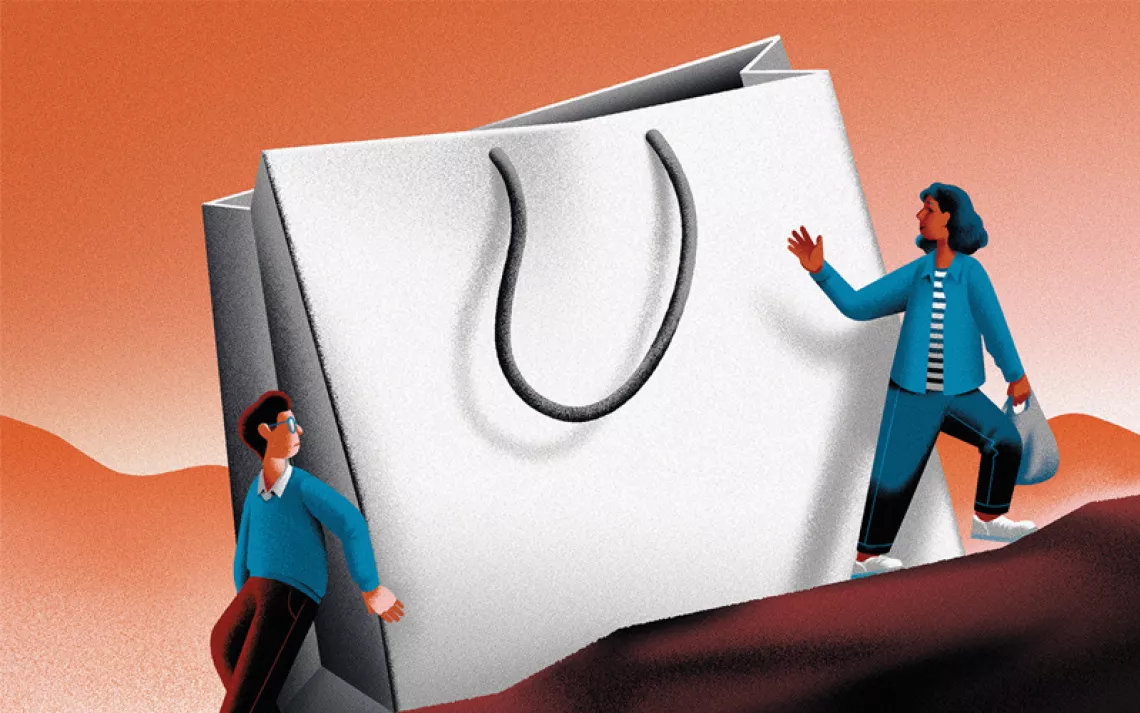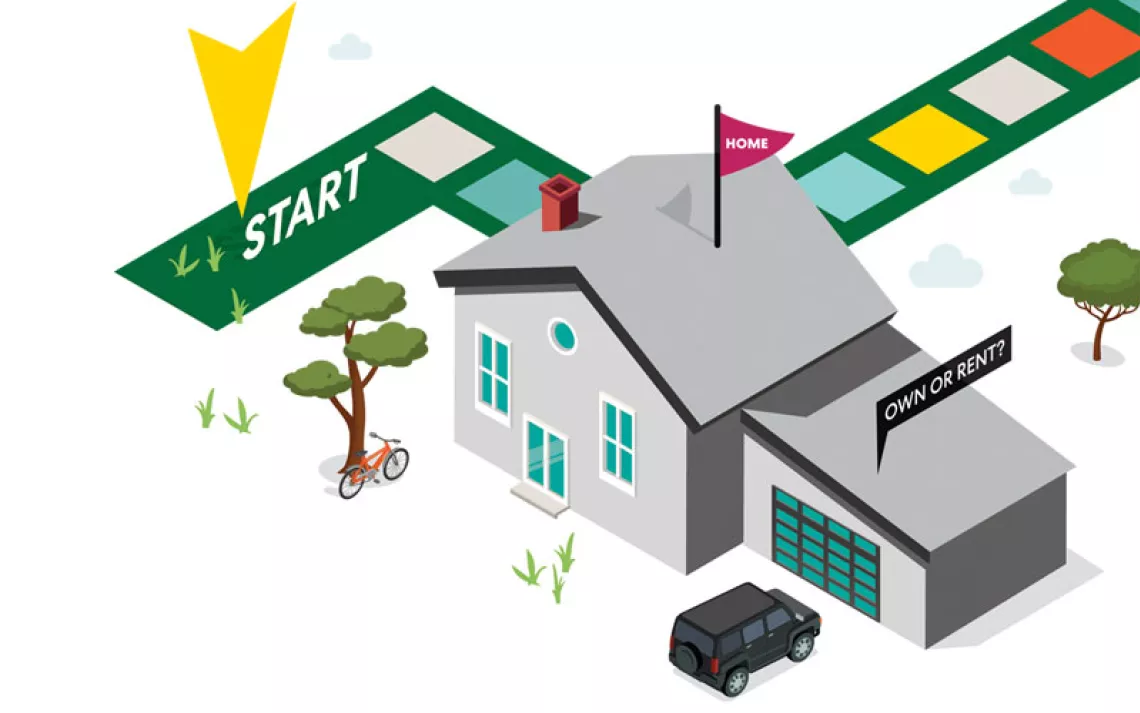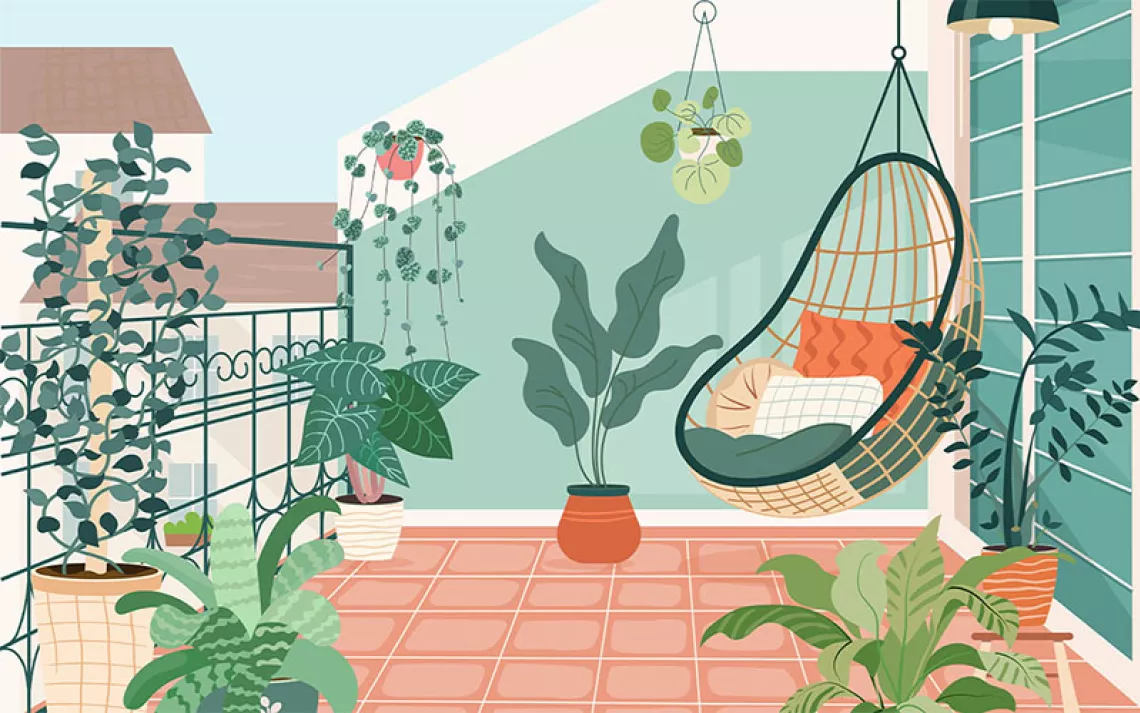8 Ways to Cut Back on Water Use, Stat
Because another summer of extreme drought is upon us
Across large swaths of the US, unusually hot temps and less-than-usual precipitation and snowpack melt have caused drought, extreme drought, and even megadrought conditions. And they’re expected to persevere through the summer unless things cool down and get very wet, very fast. How bad is it out there? A glance at the drought map released by the National Drought Mitigation Center at the University of Nebraska-Lincoln for the week of June 17 shows a whole lot of red, particularly in parts of the High Plains and across almost all the Southwest, with extreme or exceptional drought happening in North Dakota, Nevada, Utah, Arizona, and New Mexico. Meanwhile, in California, drought proclamations have been issued for 41 out of 58 counties, and the state’s two largest reservoirs—Lake Shasta and Lake Oroville—have hit their driest conditions since the late 1970s. This on the heels of California’s last “historic” drought, which lasted from 2011 to 2017. Some scientists reckon that parts of the US are in for the worst drought in 1,200 years.
We get that you may be feeling pretty helpless right about now, as you contemplate the implications of all this dryness on agriculture, wildfire risks, and our futures in bathing and hydrating. To counter that, here we’ve rounded up some of the best—and dare we say in some cases even painless—ways to proactively cut way, way back on your own home water usage, even if you think you’ve already done everything you can. Keep in mind that the EPA estimates that the average American household wastes almost 10,000 gallons of water a year just on leaks alone (yeah, you should fix those). What else are we missing?
First, figure out how much water you’re actually using. You can’t know how much water you could potentially save if you have no idea how much water you’re using to begin with or where it’s going. Monitoring systems have been popping up for years that allow you to see where water’s running in your home, in real-time, often right from your smartphone. This can help you pinpoint both where to cut back and where any leaks in the plumbing might be occurring. Those are things that your monthly utility bill breakdown, no matter how savvy, just can’t tell you.
Nelson Pedreiro, an aerospace engineer who was compelled to invent such a monitoring device by his wife, who works at a Menlo Park, California, water company, says monitoring can identify problems you didn’t even know existed, like a water softener system that’s set to regenerate with way more water than it needs or a sprinkler head you never noticed was broken.
Change your flow. If you can afford it, there’s absolutely no reason not to install a low-flow showerhead, low-flow toilet, low-flow faucets, and low-flow sprinklers. In fact, most people don’t even notice much of a difference; it’s an easy—and if you live in an area where you have to pay for water, a money-saving—way to make a difference. There are also other, similar, ways to mitigate, like with a dual-flush toilet that lets you choose the amount of water to use based on your, ahem, output. If you have the space, you might even consider harvesting water in your backyard to take the pressure off constricted groundwater supplies for watering your garden—although you should first make sure permits aren’t required in your state.
Turn it off—and sooner. As Pedreira points out, we can fall into bad habits that become second nature, and turning our attention to them lets us make small adjustments that can really add up when it comes to curtailing water use. Do you really need to take a 15-minute shower (which, with a standard showerhead, uses over 30 gallons of water) to feel squeaky clean, or could you make do with 12 minutes—or even less? Also, why are you leaving the water running while you’re brushing your teeth or shaving?
Embrace a better way to dish-wash. If you’re washing dishes by hand, don’t just cut the water in between soaping up the plates; fill the sink with sudsy water and wash a whole load in one go before rinsing. If you’re using a dishwasher, forgo rinsing the plates first; just scrape off the scraps instead. And no, not into the garbage disposal, which requires you to run water to flush food remnants; instead, scrape them into a bucket that you bring to a municipal composting center or compost in your own backyard. (Note: Spreading compost on your garden helps build up your soil health so that it holds water better—another drought hack.) These aren’t the biggest of solutions, says Pedreira, but when you consider them all together, “they start to make a difference.”
Fill 'er up. Washing dishes in the dishwasher? Then make sure you fill it all the way up with your nicely scraped plates and bowls and utensils. The same rule applies to laundry: Don’t run half-loads; make sure you’ve got an entire machine full of clothes in there before you hit “wash.” Stuck with a lighter load no matter how long you wait? Then make sure you set the machine for a small or medium load.
Cut back on energy use too. It may sound counterintuitive, but choosing to line-dry your laundry rather than running it through the dryer is a way to have a broader water-reducing effect. That’s because electricity that’s generated using fossil fuels or nuclear power requires a lot of water to cool the plant—meaning that cutting energy use is a double win. Are there other places around the house and garden where you could be using less energy?
Water smarter. The EPA estimates that between 30 and 60 percent of residential water usage happens outside (obviously, folks with yards and access to other outdoor spaces fall on the higher end of this spectrum than urban dwellers). Your municipality might have severe enough drought conditions that it’s already forbidden the use of hoses and sprinklers for keeping your garden up to snuff—that water harvesting would come in handy about now. But if you're still allowed to water, make sure you do it at the coolest time of the day, when there’s no sun beating down to evaporate that precious moisture. If you’ve got a sprinkler system on a timer, consider setting it for 2 A.M. If you’re watering by hand, wait till the sun goes down, or get up before dawn to give a good sprinkle when you’ll get more “performance” out of that precious water.
Plant smarter. Plants that are native to your area are more likely to be tolerant of local conditions, and among all those there are some that will be more drought-resistant than others. Talk to expert landscapers—you can try your nearby extension service—about what plants in your garden and yard might be water hogs, and what native perennials would make good, resilient substitutes. According to Pedreira, you can probably also get away with watering quite a bit less than you do. Some signs that you might be overwatering include mushrooms popping up on your lawn and plants wilting in soil that is clearly damp. Other ways to mitigate drought in your garden: mulch it, to keep in moisture; puts plants that require the similar amounts of water next to one another; and leave less space between plantings, for a smaller, less water-needy plot.
 The Magazine of The Sierra Club
The Magazine of The Sierra Club




